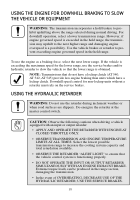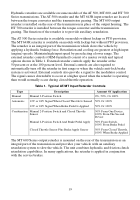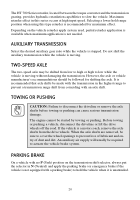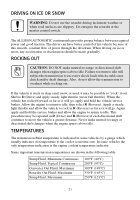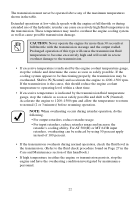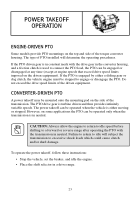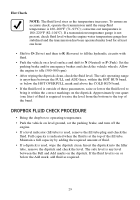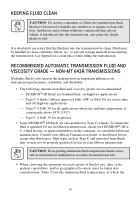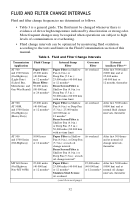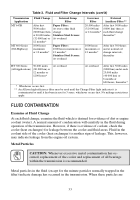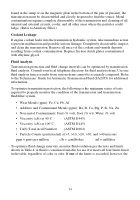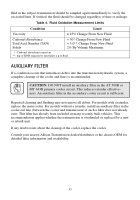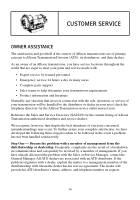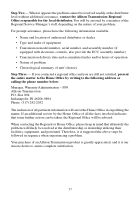ALLISON-OM1334EN - Page 33 of 48
28
Check the fluid level by the following procedures and record any abnormal fluid level,
milky appearance, or any trace of coolant in the fluid on your maintenance records.
Cold Check
• Park the vehicle on a level surface, set the parking brake and/or emergency
brakes, and chock the vehicle wheels.
• Run the engine at 1000–1500 rpm for 1 minute to purge air from the system.
Return engine to idle, then shift to
D
(Drive) and then to
R
(Reverse) to fill the
hydraulic circuits with fluid. Then shift to
N
(Neutral) or
P
(Park) and allow
the engine to idle (500–800 rpm). A cold check should be made when the
sump fluid temperature is 60–120˚F (16–49˚C). This temperature typically
occurs within the first ten minutes of operation during initial start-up.
• Clean around the end of the fill tube before removing the dipstick. Wipe the
dipstick clean and check the fluid level. If the fluid on the dipstick is within
the COLD RUN or REF FILL band, the level is satisfactory for operating the
transmission until the fluid is hot enough to perform a HOT RUN check. If the
fluid level is not within the COLD RUN or REF FILL band, add or drain fluid
as necessary to bring the level to the middle of the band.
• Perform a hot check at the first opportunity.
NOTE:
The only purpose of the Cold Check is to determine if the
transmission has enough fluid to be safely operated until a Hot Check
can be made.
CAUTION
: The fluid level rises as sump temperature increases.
DO NOT fill above the COLD RUN band if the transmission fluid
is below normal operating temperature.
NOTE:
To ensure an accurate cold check, operate the transmission
until the sump fluid temperature is 60–120°F (16–49°C). This
temperature is usually reached within the first ten minutes of operation
from initial start-up.
Back to Top

